Abstract
Elongation of intact young leaves of maize was found to be dynamically dependent on soil water supply. With adequate water, elongation was remarkably constant but slowed when the water potential of the soil in pots dropped from −0.1 to −0.2 bar and stopped when it dropped to −2.5 bars. The corresponding range of leaf water potential was −2.8 to −7 bars. Elongation resumed in less than a few seconds after a mildly water-stressed plant was rewatered.
The effects on leaf elongation of step-wise changes in water potential of the root solution were determined. When the water potential of the root medium suddenly decreased below 0 bar, growth stopped initially and then resumed at a lower rate. When the water potential was suddenly increased back to 0 bar, growth accelerated transitorily to a high rate before slowing to the steady state rate. These results suggest an increase in cell extensibility during water stress.
Leaves stressed for 1 or more days attained after rewatering almost the length of the control leaves. Growth rate after rewatering did not exceed that of the control at the corresponding developmental stage except during the short transitory rapid phase lasting only a fraction of an hour.
As stress developed, growth stopped before carbon dioxide assimilation decreased noticeably. Upon the release of mild and short stress, the transitory rapid growth completely made up for the reduced elongation during stress, suggesting that metabolic processes for cell expansion might have proceeded unchecked during the stress period.
The sensitivity and rapidity of response to changes in water status all point to the direct role of water in growth; its uptake provides the physical force for cell enlargement.
Full text
PDF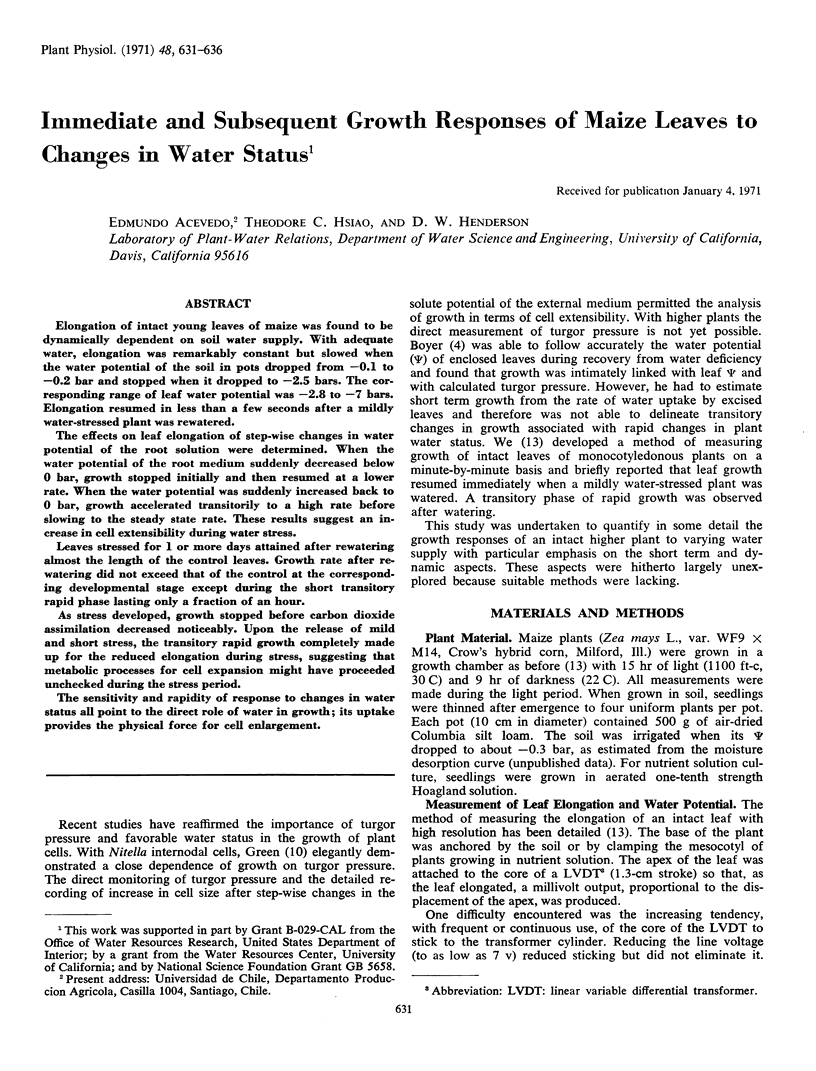
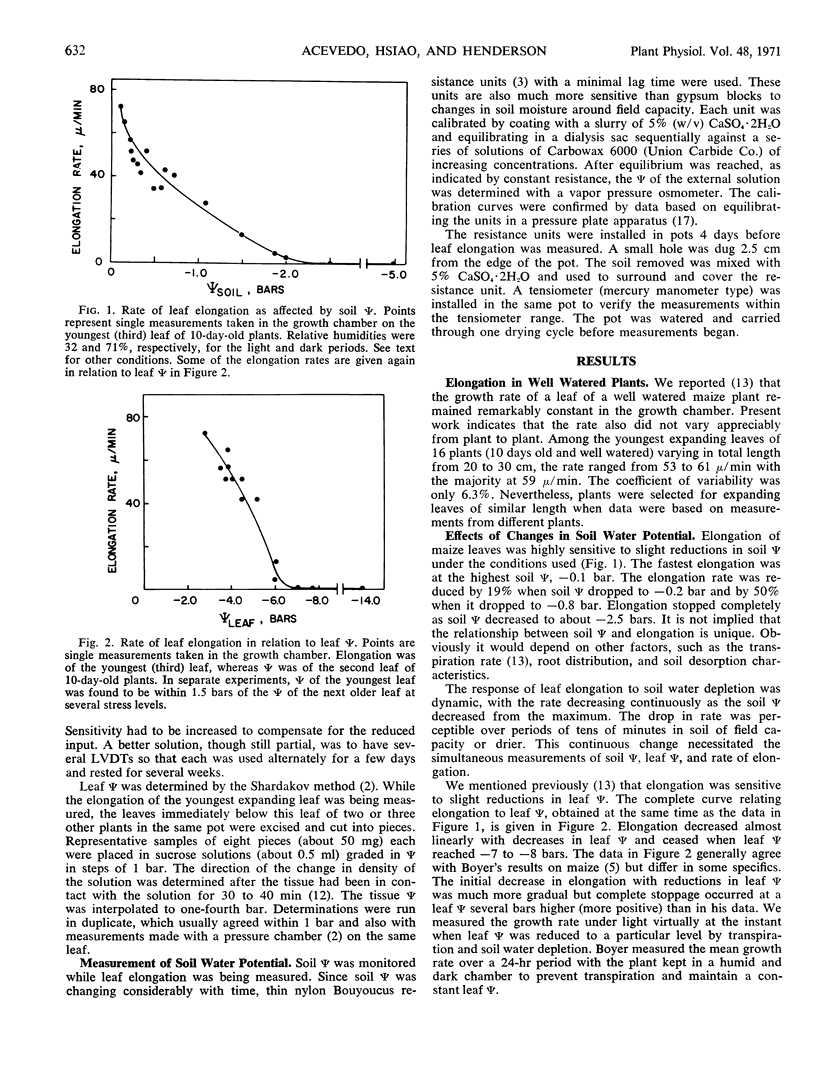
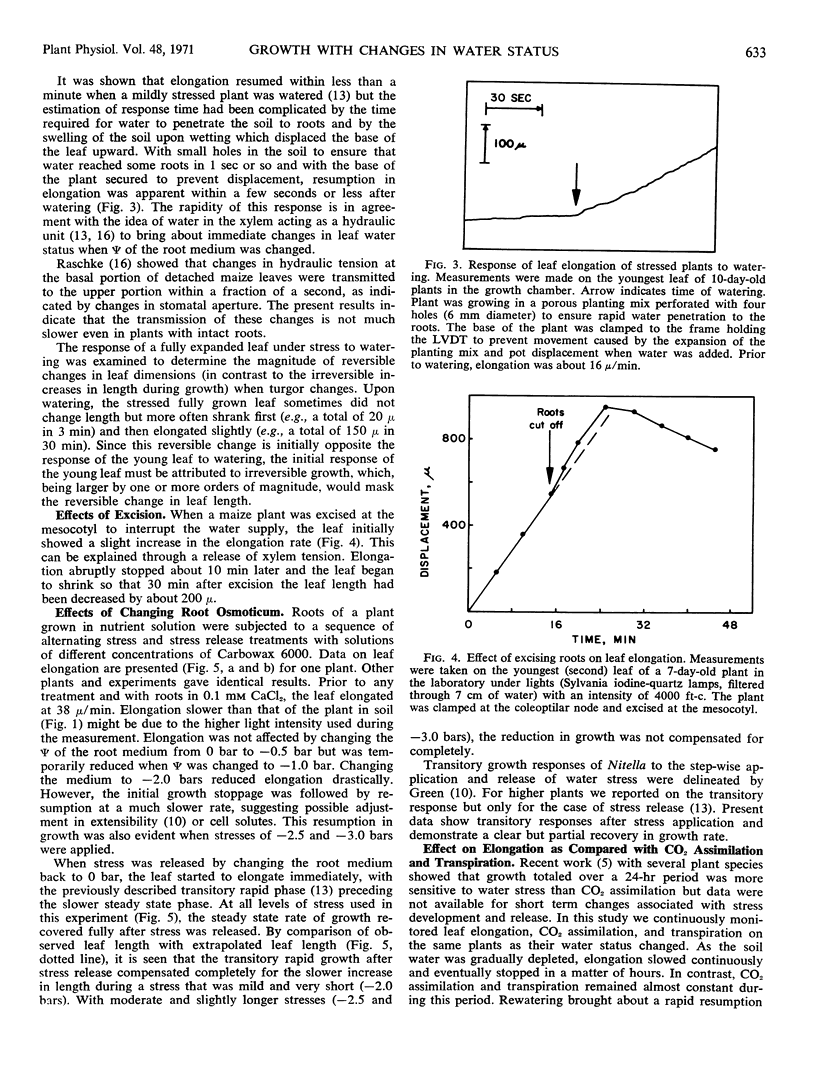
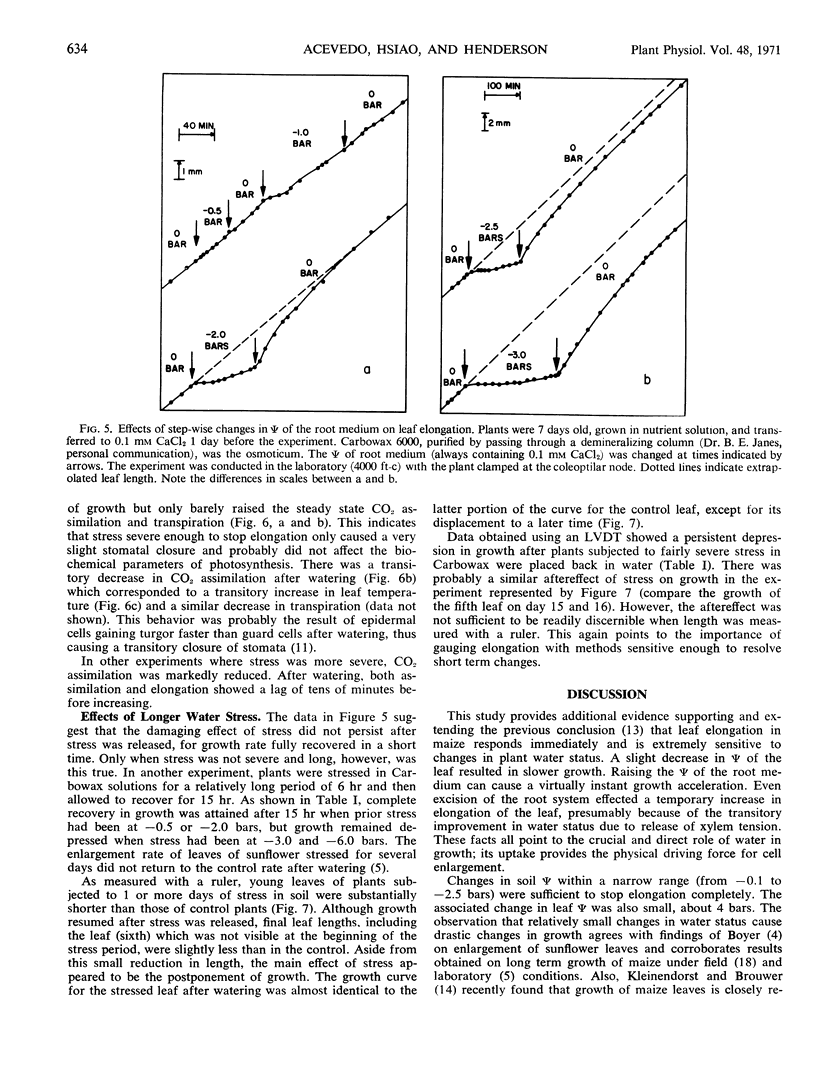
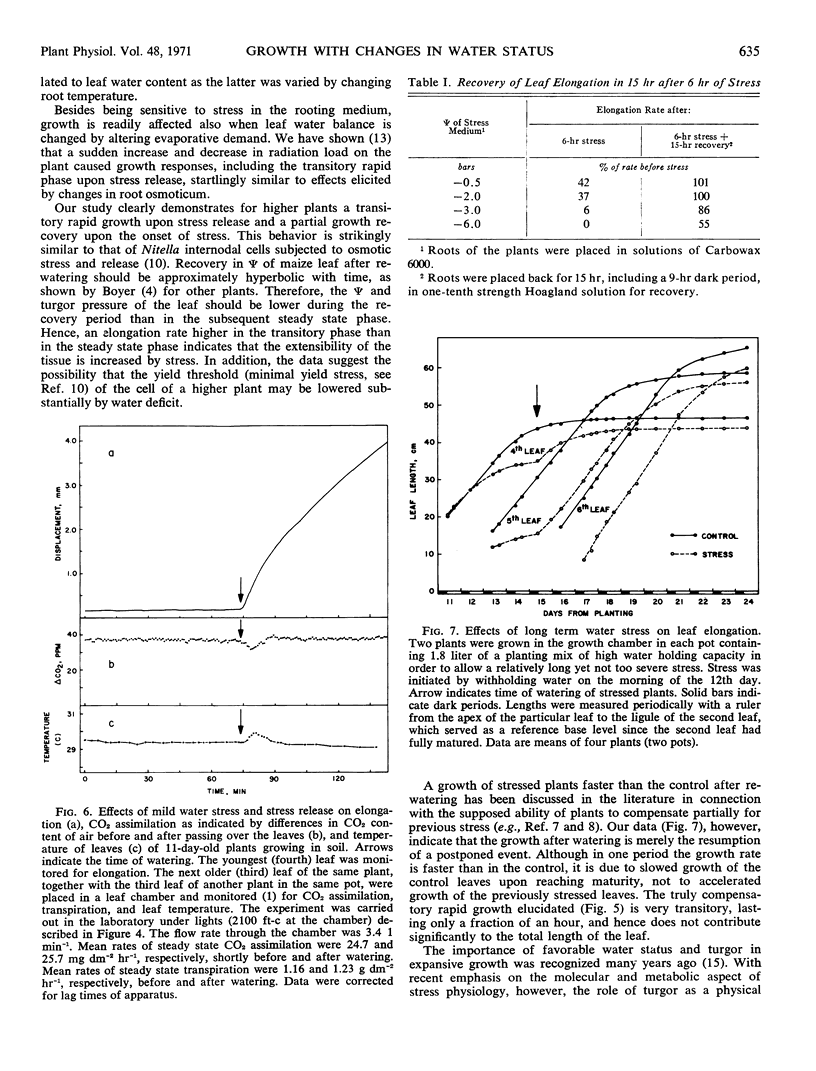
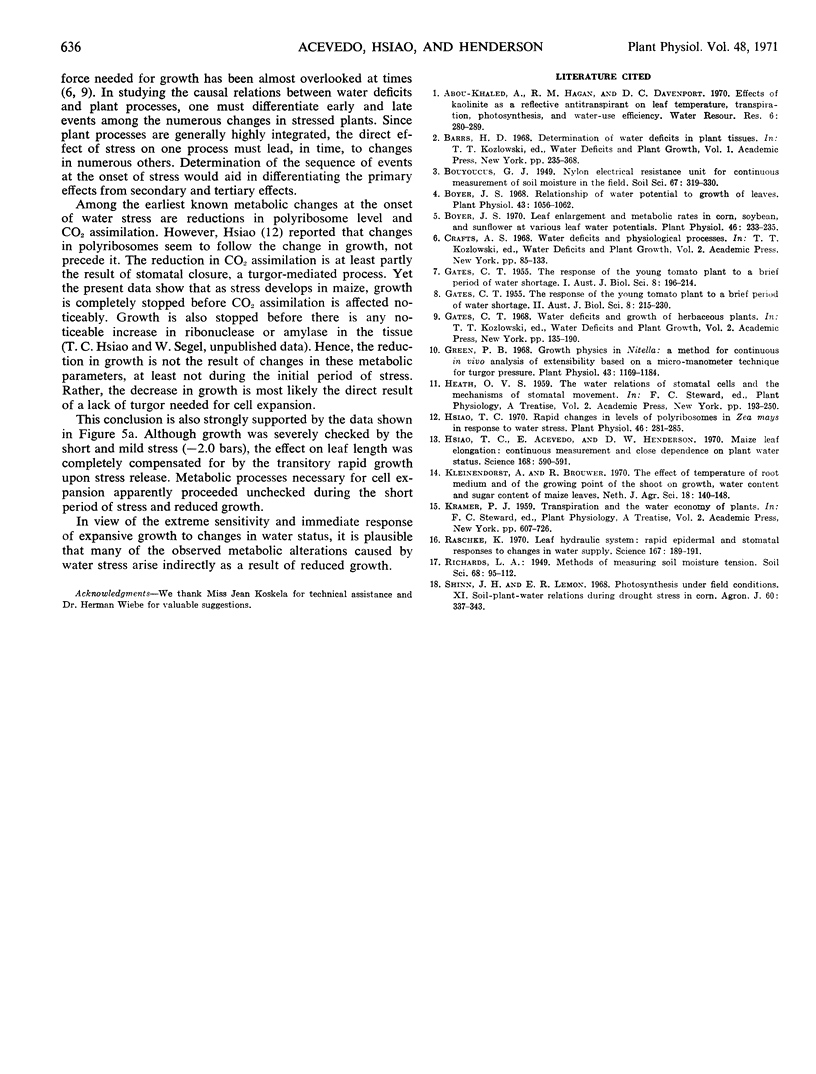
Selected References
These references are in PubMed. This may not be the complete list of references from this article.
- Boyer J. S. Leaf enlargement and metabolic rates in corn, soybean, and sunflower at various leaf water potentials. Plant Physiol. 1970 Aug;46(2):233–235. doi: 10.1104/pp.46.2.233. [DOI] [PMC free article] [PubMed] [Google Scholar]
- Boyer J. S. Relationship of water potential to growth of leaves. Plant Physiol. 1968 Jul;43(7):1056–1062. doi: 10.1104/pp.43.7.1056. [DOI] [PMC free article] [PubMed] [Google Scholar]
- Green P. B. Growth Physics in Nitella: a Method for Continuous in Vivo Analysis of Extensibility Based on a Micro-manometer Technique for Turgor Pressure. Plant Physiol. 1968 Aug;43(8):1169–1184. doi: 10.1104/pp.43.8.1169. [DOI] [PMC free article] [PubMed] [Google Scholar]
- Hsiao T. C., Acevedo E., Henderson D. W. Maize leaf elongation: continuous measurements and close dependence on plant water status. Science. 1970 May 1;168(3931):590–591. doi: 10.1126/science.168.3931.590. [DOI] [PubMed] [Google Scholar]
- Hsiao T. C. Rapid Changes in Levels of Polyribosomes in Zea mays in Response to Water Stress. Plant Physiol. 1970 Aug;46(2):281–285. doi: 10.1104/pp.46.2.281. [DOI] [PMC free article] [PubMed] [Google Scholar]
- Raschke K. Leaf hydraulic system: rapid epidermal and stomatal responses to changes in water supply. Science. 1970 Jan 9;167(3915):189–191. doi: 10.1126/science.167.3915.189. [DOI] [PubMed] [Google Scholar]


